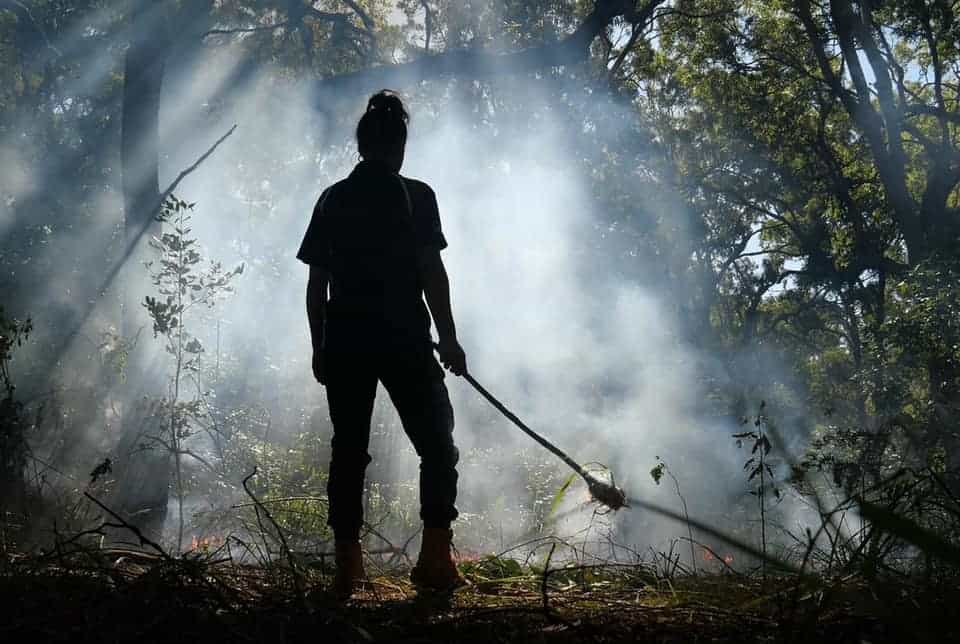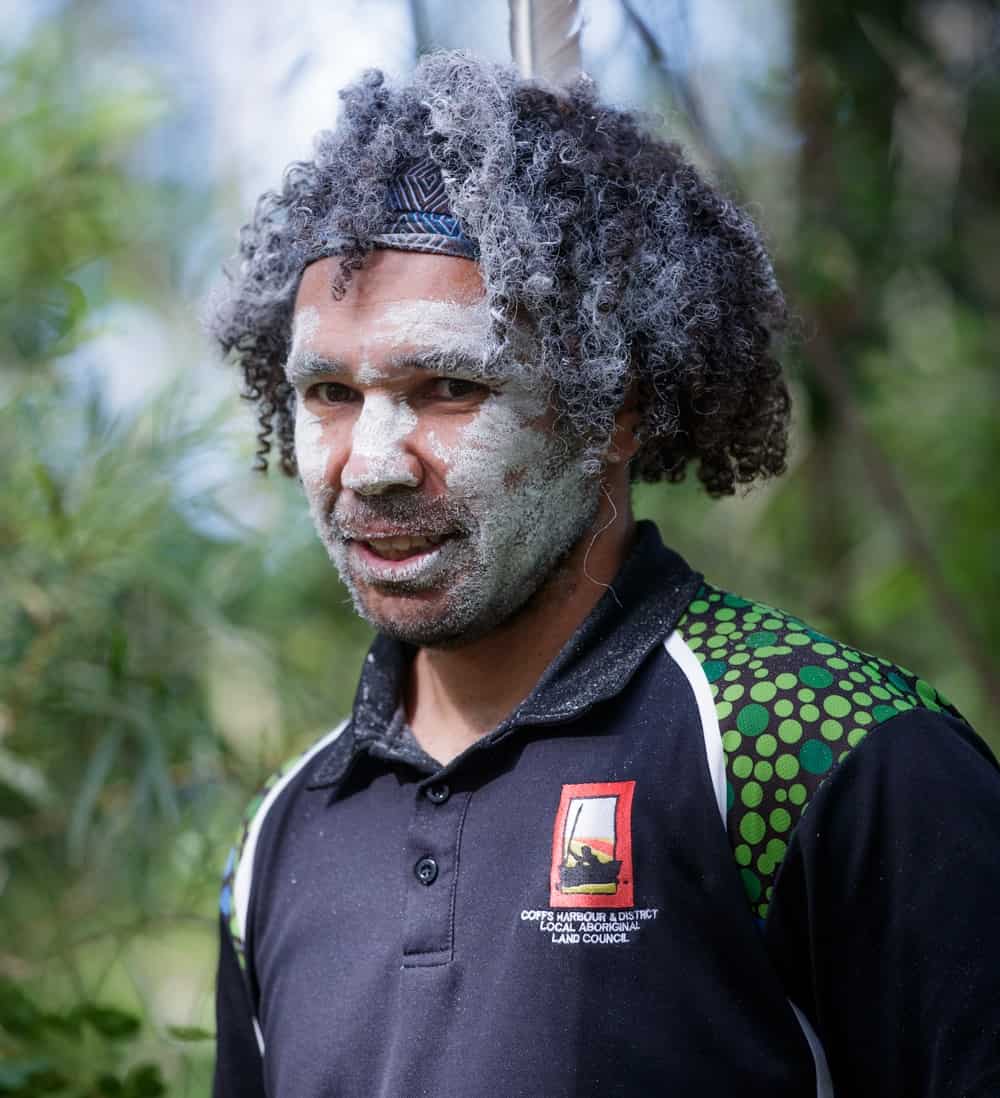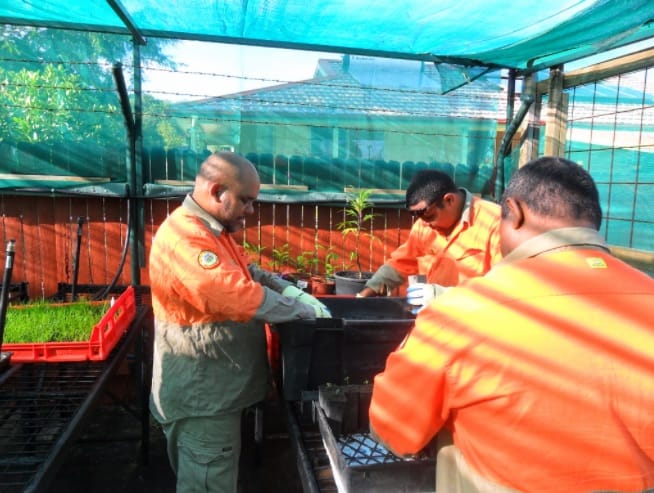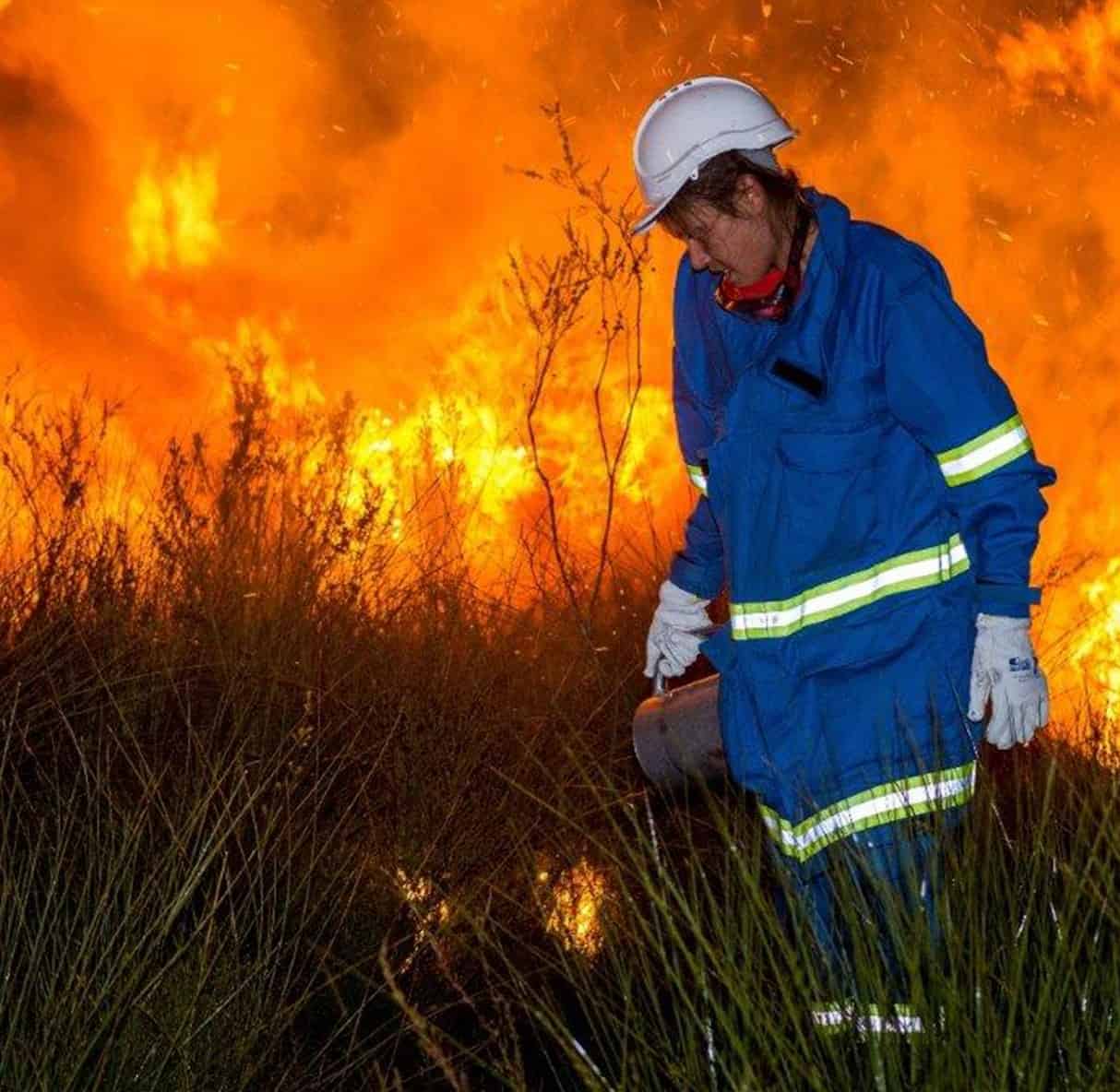Aboriginal rangers play a key part in conservation efforts. They manage and implement conservation values across both Aboriginal owned and public lands.
Aboriginal rangers apply both traditional Aboriginal knowledge and Western land practices.
Traditional knowledge includes fire practices, Aboriginal ecological knowledge, seasonal calendars, cultural species research and monitoring, environmental and cultural art, intergenerational knowledge transfer, traditional governance and land management structures.
An example of some Aboriginal ranger groups working across New South Wales include:

The Darrunda Wajaarr Rangers work on Gumbaynggirr Country on the Mid North Coast of New South Wales. In 2019 they carried out extensive bush regeneration, weed management and pest management to boost the number of koalas. Much of the work took place on Aboriginal land in Mylestom, next to Bongil Bongil National Park. This area supports an important koala population. Rangers also undertook an extensive survey of koalas in the area along with one of their key partners, the Nature Conservation Trust.


The Githabul Rangers natural resource management team is based in northern New South Wales, home to the most extensive area of subtropical rainforest in the world. They work in partnership with the Githabul community to protect and improve important natural and cultural sites across 110,000 hectares of Country using contemporary and traditional natural resource management knowledge.
Their work involves weed management, traditional fire management, and propagation and planting of native species. Some projects undertaken by the rangers include:
- Wallaby Creek Project – removing a range of invasive species to help restore the remaining World Heritage-listed rainforest
- Tooloom Falls Project – selected due to its importance to the local Githabul community and the invasive weed infestation of the riverbank.
